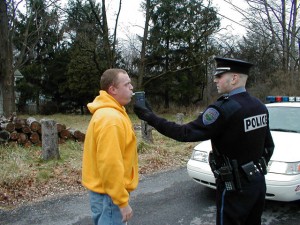Most Cited Breathalyzer Results for Drunk Driving Arrests in Past Year
 Other than drug possession, there might not be a bigger criminal defense field than drunk driving attorneys. In the past year alone thousands of clients have come to LegalMatch.com seeking an attorney to represent them in a drunk driving case.
Other than drug possession, there might not be a bigger criminal defense field than drunk driving attorneys. In the past year alone thousands of clients have come to LegalMatch.com seeking an attorney to represent them in a drunk driving case.
Most people have heard of a .08 blood alcohol content (BAC) limit, and will somehow assume this has something to do with driving drunk. In reality the law varies by state to state. (How many times have you heard that?) Some states have higher legal limits than others, or laws that do not require a blood alcohol measurement for conviction.
The following lists the most common BAC levels cited by the thousands of LegalMatch customers looking for a drunk driving attorney last year, in order of frequency:
- I don’t know: 24%
- .10 to .15: 20%
- No test given: 16%
- .16 to .20: 12%
- .08 to .09: 9%
- .21 or more: 7%
- .07 or less: 7%
There is an easy joke here about not remembering what your test score was for driving drunk. I will eschew it as a matter of editorial professionalism. There are a variety of reasons besides inebriation for not knowing what the test results were.
My interest lies in the 7% who were pulled over and arrested for being below a .07%. The reason most states utilize a .08% blood alcohol level is because of studies showing a significant drop off in a person’s ability to drive with a .08% or above BAC. Prosecuting the offense follows a familiar pattern: introduce the reading, introduce the expert, and introduce the findings damning the defendant to the nether-regions of presumptive guilt-purgatory.
But what about the tee-totaling .07 percenters? Presumably their state still allows for their prosecution. In California, for instance, you can be prosecuted either for being above a .08%, or for driving “while under the influence.” In English, that means that you were so under the influence that your ability to drive was impaired.
Even though the defendant can technically still be guilty of a crime, anything below a .08 BAC in a state like California will always be used by the defense. Why? Because jurors expect a .08 reading or above. It is akin to the CSI effect: jurors expect police investigations to have fancy forensic scientists with super-technologically advanced super-computers that can recreate three dimensional representations of a crime scene piece by piece. Which of course is a complete fantasy.
For whatever reason, jurors come into the court with a preconceived notion that drunk driving means driving above a certain level, usually .08%. The truly rational left brained jurors might be able to completely shed this preconception. The majority of jurors, on the other hand, are skeptical of a test below .08%, or the absence of a test at all. Throw in error rates and the fuzzy science often relied upon by prosecution experts as “proof” that field sobriety tests show impairment, and the prosecution usually has a loser on its hands.


Comments